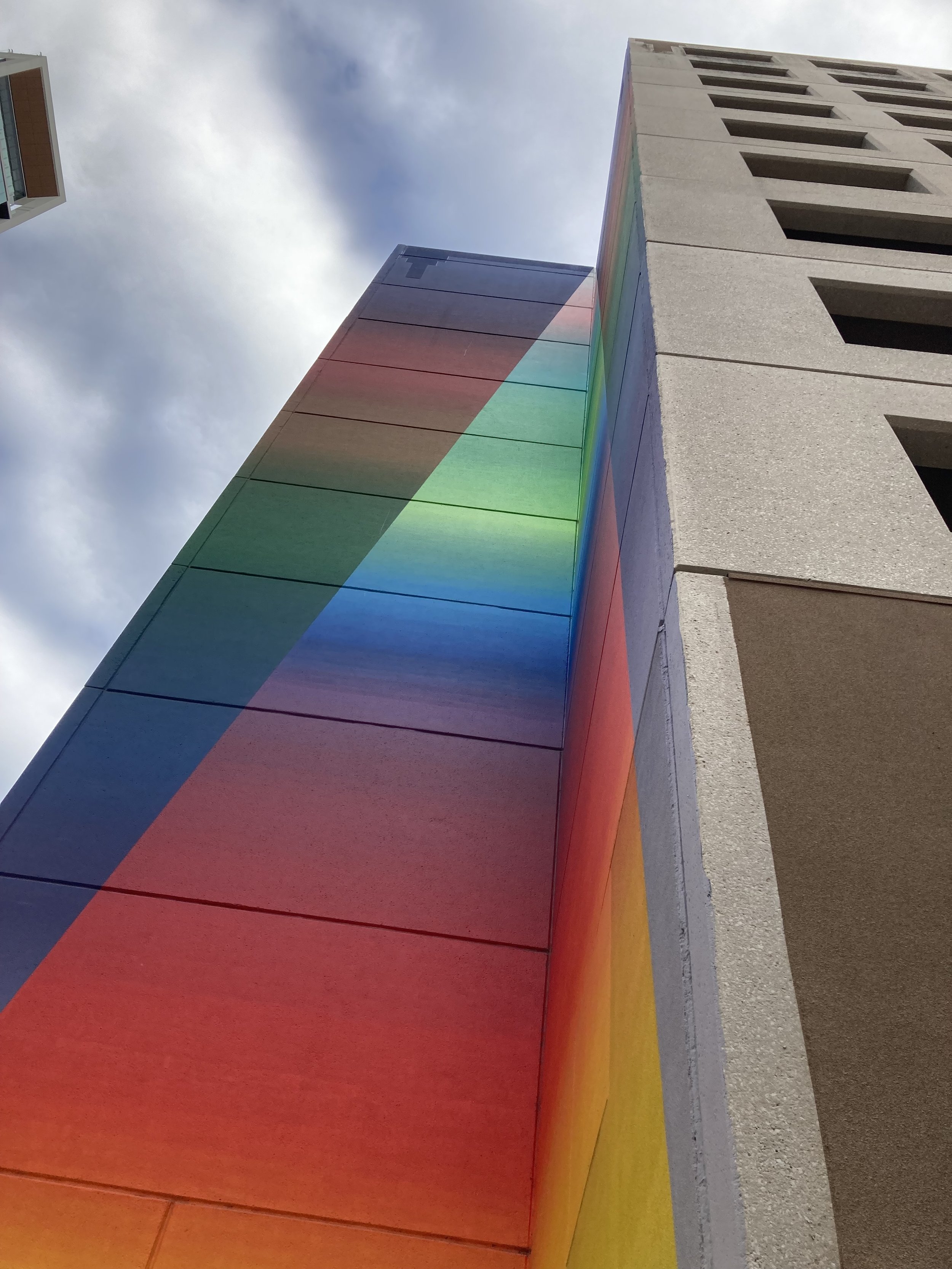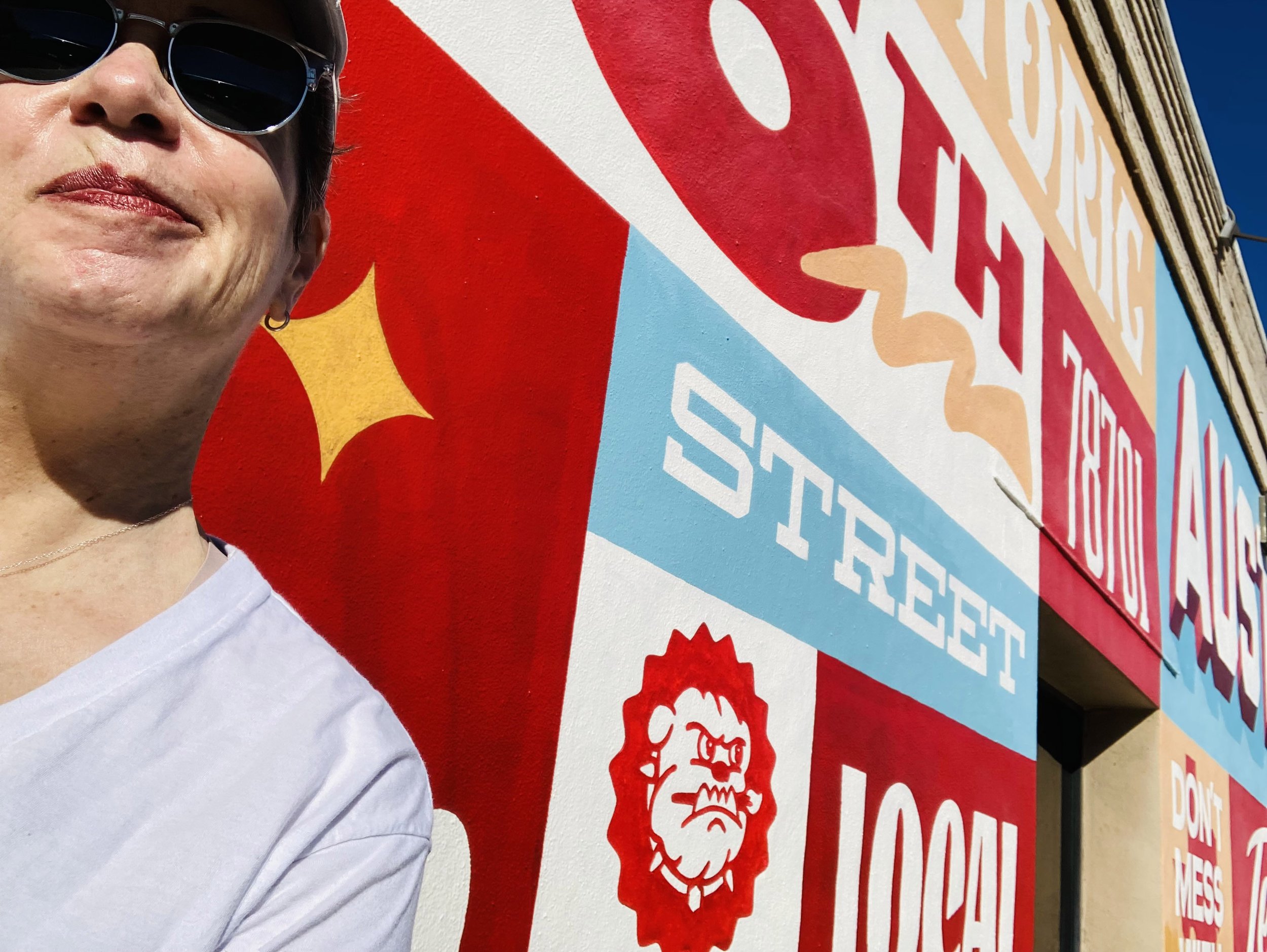Tau Ceti (2018)
A decade ago, I arrived in Austin with the gratitude of a prison escapee. Dallas had almost crushed me with its fast-paced bigness and self-devouring culture of more, more, more. Low-rise and modest by comparison, Austin lured me southward with promises of an offbeat culture its musicians and artists had helped to create. The vibrant exuberance I found here intoxicated me like a drug. Sadly, that high didn’t last.
The tech boom that had preceded me by several years was quickly changing Austin. Within five years of my move to Central Texas, the musicians and artists who’d left their imprint on the city mostly fled. They had to: well-to-do legions who worked for the multi-billion dollar companies now in Austin had displaced them with money they didn’t have. The new downtown high rise buildings said it all: the sky’s the limit. What happened below—to the artists and people forced to find cheaper digs outside Austin, to the homeless people living on city benches—was another matter entirely.
Austintacious (1973)
But look closely and you’ll also see vestiges of the artist-friendly city Austin once was in that adorn everything from walls to utility boxes, softening the edges of what has since become a tech-inflected, quasi-Gilded Age wasteland. Most of the murals I first saw— like the wildly cheerful Austintacious—are located on the University of Texas campus. An early 1970s product of three daring UT art students, Austintacious went on to become the city’s first official mural, a whimsical snapshot of what now seems like a far simpler and more certain time. There’s no sign of tech anywhere; just quirky, fish-eyed renderings of everyday life in an eccentric Texas town.
Jeremiah the Innocent (1993)
Two blocks down from on a section of Guadalupe Street that students call “The Drag,” you’ll find another landmark mural, Jeremiah the Innocent. In it, a goggle-eyed frog looks out at passersby and offers a greeting: “Hi How Are You?” Austin musician Daniel Johnston painted this beloved image in 1993 to advertise his album of the same name. Even Nirvana frontman Kurt Cobain would wear a t-shirt emblazoned with the frog’s image as an homage to Johnston’s music. Building-mad developers spared the mural from the wrecking ball last year. But the message in that act of mercy was clear. No longer content to be and be weird like Jeremiah, Austin was becoming another beast entirely. One that thrived on self-commodification and would devour almost everything—including the musicians who made it into what it was—that stood in the way of its metamorphosis.
6th Street Austin mural (2012)
I thought about all of this the day I visited the now 12-year-old 6th Street Austin mural last December. Big and bold, it made an unequivocal statement of the city’s existence to all who drove past it on nearby I-35: 6th Street, Austin. Live Music Capital of the World. I posed in front of that wall—which marked the gateway to one of the city’s major tourist areas—chiding myself for every shot I took. My photos, and especially the ones I posted on social media, were free advertising for the city. Much as I hated to admit it, they were as much a part of the machine that helped to build the skyscrapers I detested as big tech.
Still, I snapped away. Weeks earlier, that same desire to interact with public art had drawn me to a 2nd Street parking structure and the rainbow glory of Tau Ceti. One hundred and three feet from bottom to top, this mural featured a single Isosceles triangle that, on days when the sun struck it in just the right way, seemed to glow from within. Named after a sun 12 light-years from earth, the mural reminded viewers about diversity; that white light contained every color that existed. But the mural spoke to me of other things, like the ambitions Austin had for itself. Once a laid-back college town, it now aimed to create a bigger, more exaggerated version of itself because this was Texas. And because it was a capital city that yearned for worldly attention.
The Beauty of Liberty and Equality (2020)
For all its hyper-capitalist aspirations, Austin is more complex than its painted surfaces suggest, especially where politics are concerned. A few blocks west of Tau Ceti is another mural, The Beauty of Liberty and Equality that celebrates, through the central image of a chain-breaking Wonder Woman, the 100th anniversary of Women’s Suffrage. Its eleven-story high idealism and liberality are as inspiring as they are devastating. Just two years after it was painted in early 2020, Roe v. Wade would be overturned, allowing Texas to step in with a near-total ban on abortion. Whenever I see that mural, the irony bites hard enough to make me weep. Austin remains a proud blue speck in a sea of red. But the mural meant to uplift now seems—at best—like the reminder of another loss and—at worst—a cruel joke.
If Beauty came into existence at the start of a year that would also mark the first of the pandemic, the Be Well murals—which cover 10,000 square feet of the Lamar Street underpass wall—came about as a direct response to COVID crisis. A local arts organization, Raasin in the Sun, curated the artwork, which was produced by several muralists who worked on it from the end of 2020 into 2021. They had been among the lucky few selected not just for their talent and interest in mental health and wellness. But for how much the pandemic had impacted them.
Detail from Lamar Street Underpass wellness murals (2021)
Strolling next to the walls the day after New Year’s, I let the bright messages about the importance of self-care wash over me. No one had escaped COVID; not even people like me who had never gotten sick. The outbreak still took a psychological toll on survivors: we could only stand by, powerless to do more than watch the destruction around us. Peace came from the stillness of rest. And these artists seemed to suggest, from the act of creating beauty and sharing it with others.
The space for artists in a city obsessed with money had shrunk; I wondered how much smaller that space might become. I looked at swirling designs again, this time against the backdrop of buildings that continued to rise and multiply. There really wasn’t any certainty anymore. Perhaps that had been as much an optical illusion as the rainbow triangle of Tau Ceti. Maybe all we could really count on was contradiction. And the consolations of art to help us walk the ever-shifting line between the chaos change and everything else we had ever known.





